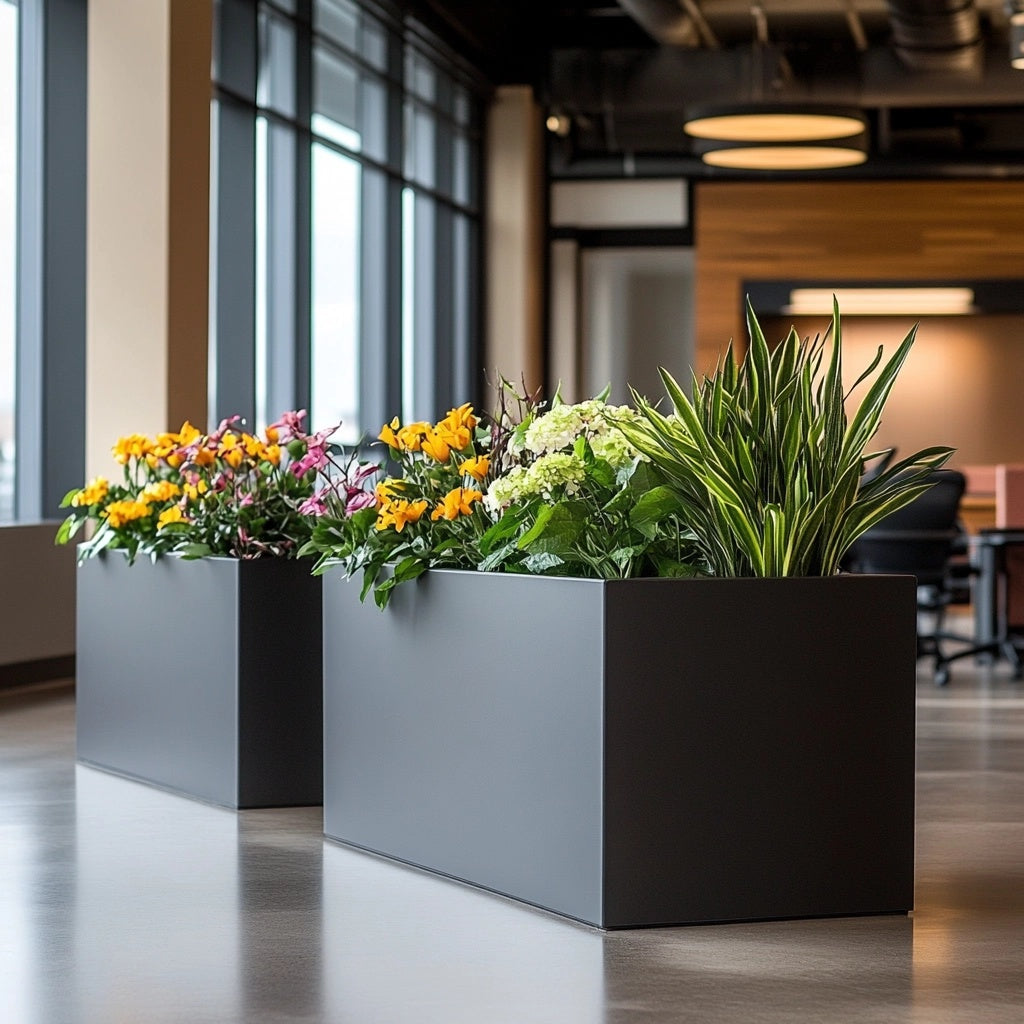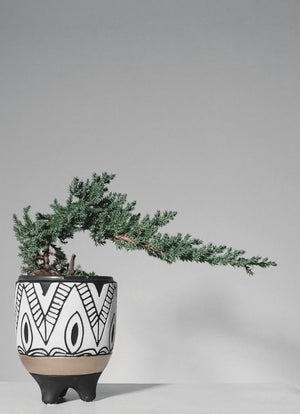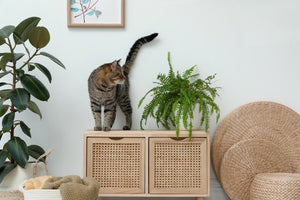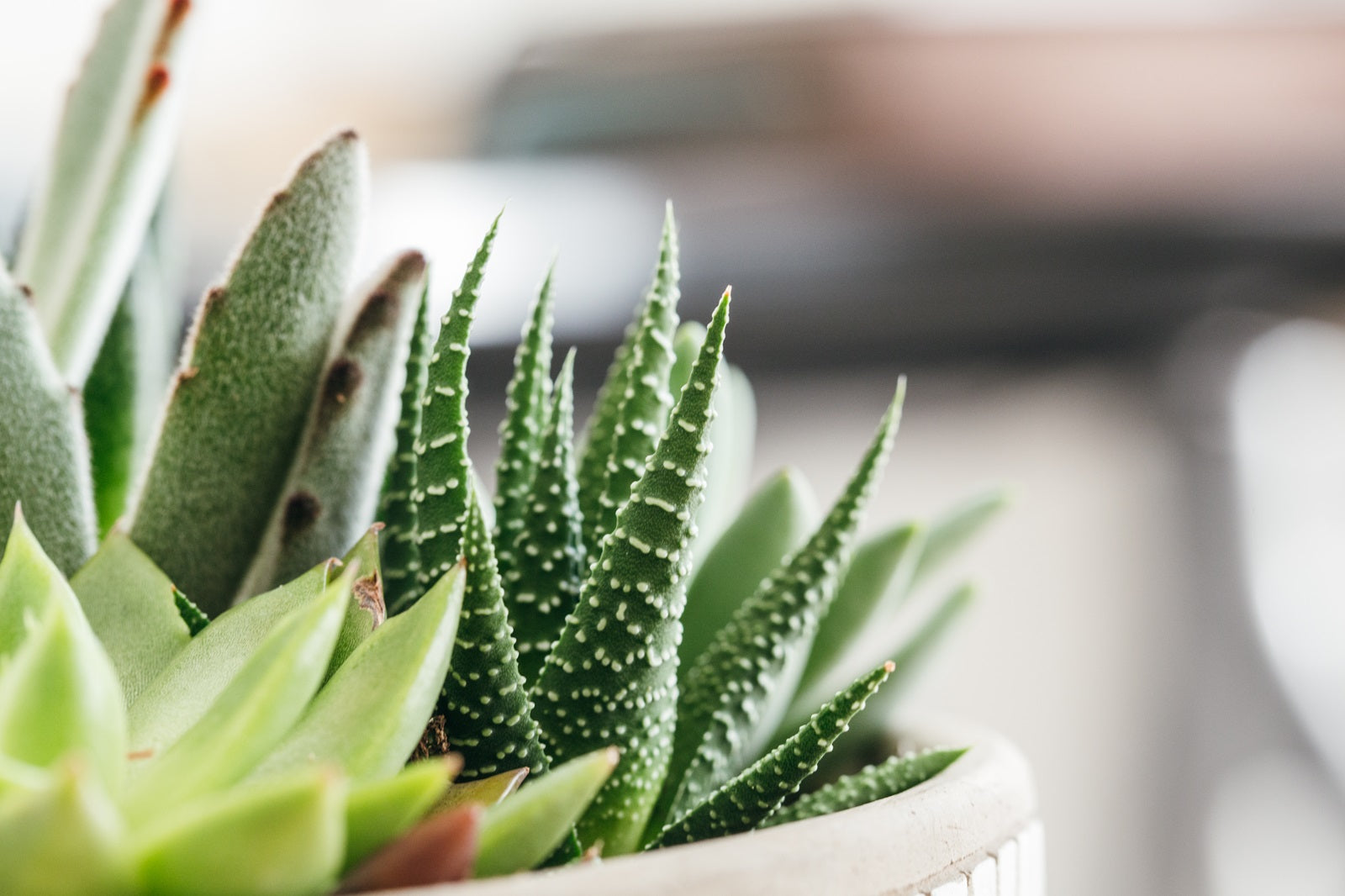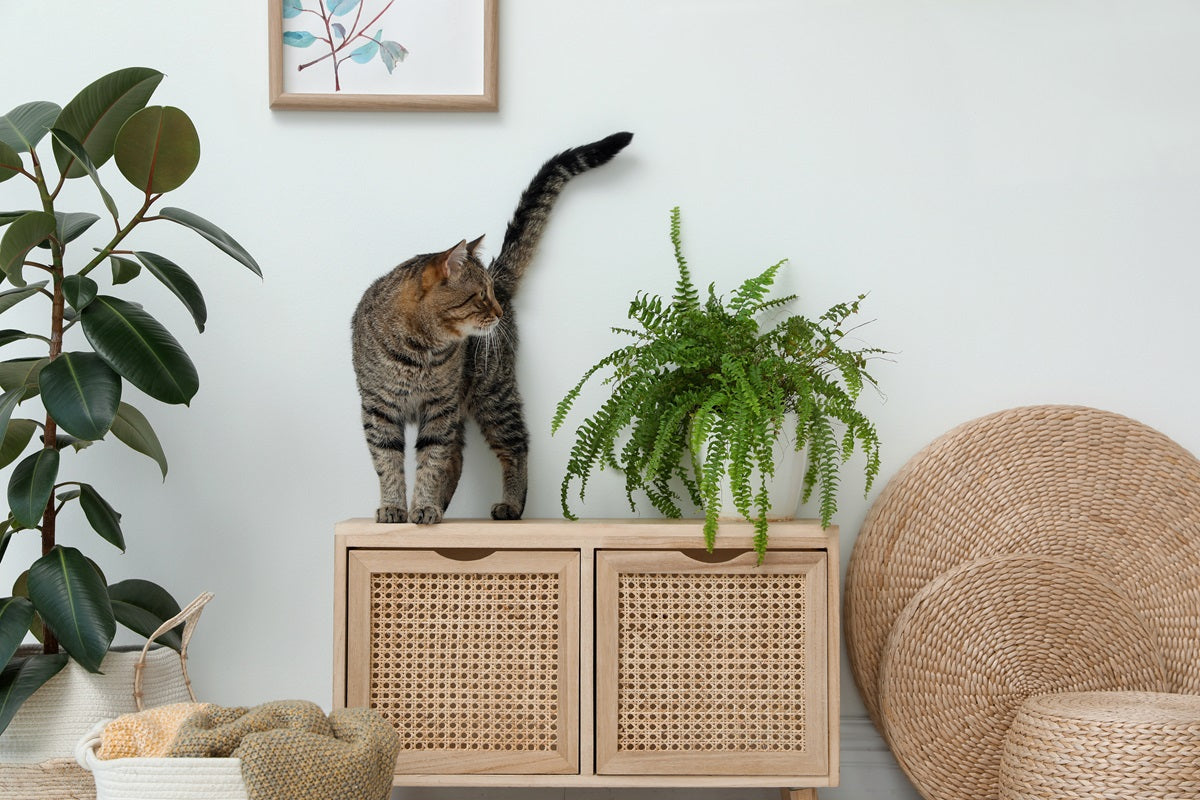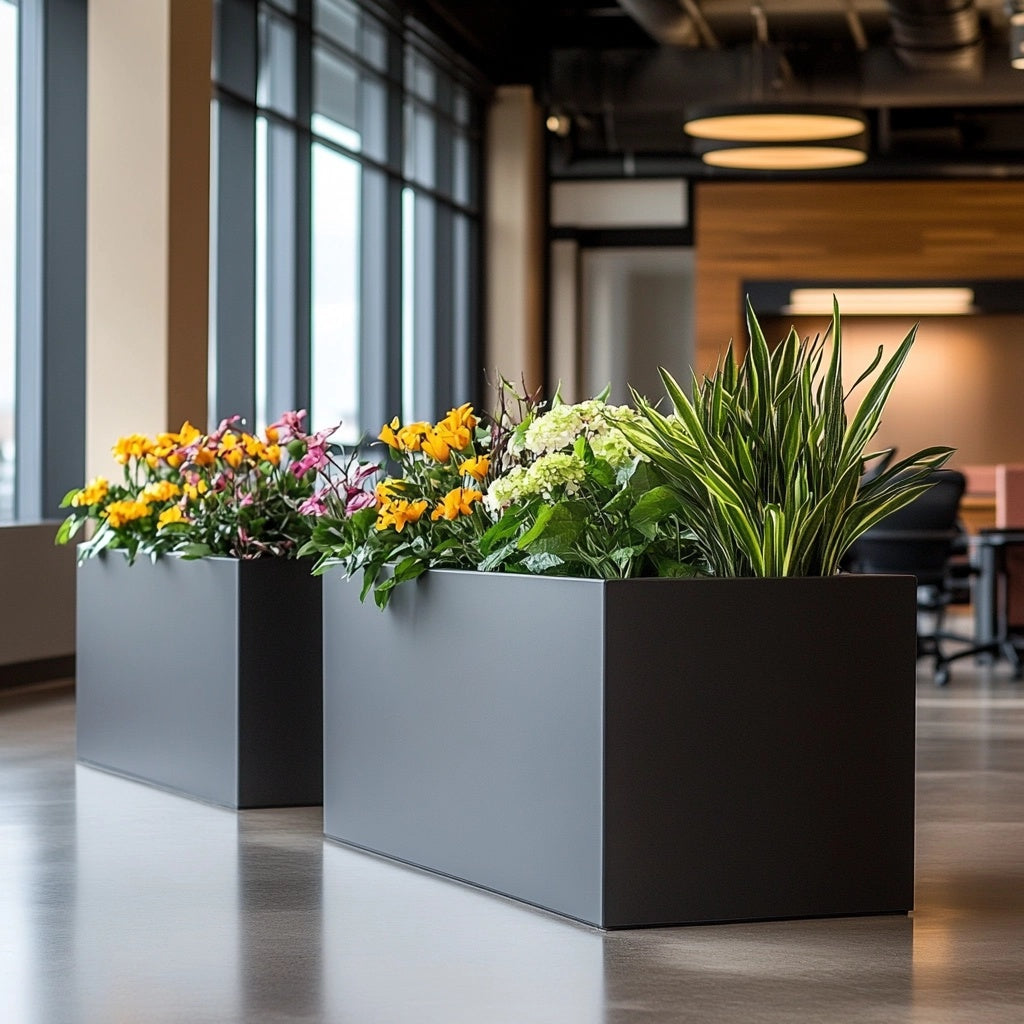Struggling with soggy soil and root rot? Your plants deserve better. Proper drainage is the key to healthy, thriving greenery. By understanding the importance of drainage and implementing effective techniques, you can ensure your plants flourish.
So, what to put in bottom of planter for drainage? In this comprehensive guide, we'll explore various materials and methods to create a well-draining environment for your beloved plants. Let's dive in and discover the secrets to healthy plant growth!
Why Proper Drainage is Important
Healthy plants require a balance of moisture and oxygen. When a planter lacks adequate drainage, excess water can accumulate, creating a waterlogged environment. This can suffocate roots, depriving them of oxygen and making them susceptible to diseases.
Root rot is a common problem caused by poor drainage. It occurs when fungi thrive in moist, oxygen-deprived conditions, attacking and decaying plant roots. Symptoms of root rot include wilting, yellowing leaves, and stunted growth.
Materials to Use for Filling the Bottom of a Planter
When filling the bottom of a planter, it's essential to choose materials that promote drainage while providing support for the potting mix. Here are some effective options:
Lightweight Options
Empty Plastic Bottles and Milk Jugs

What to put in bottom of planter without drainage holes? Empty plastic bottles and milk jugs are one of the most effective ways to create a drainage layer in your planter. By crushing the bottles and jugs, you create air pockets that allow excess water to drain away.
This method is not only the cheapest way to fill planters but is also environmentally friendly, as it reduces waste and helps conserve resources. However, it's important to ensure that the crushed plastic pieces are not too small or irregularly shaped, as this can potentially clog drainage holes and impede water flow.
|
✅ Pros |
❌ Cons |
|
Recyclable and eco-friendly |
Potential for clogging |
|
Lightweight and easy to handle |
Aesthetic concerns |
|
Cost-effective |
Limited durability |
|
Effective drainage |
Air-Filled Packing Pillows and Bubble Wrap

Air-filled packing pillows and bubble wrap work as an excellent filler for large planters as well as smaller alternatives. Their unique structure, filled with countless air pockets, provides exceptional drainage, allowing excess water to flow freely through the soil. This helps prevent root rot and ensures your plants receive adequate oxygen.
These materials offer a soft and protective cushion for your plant's roots. While they may be slightly more expensive than some other options, their superior drainage properties and durability make them a worthwhile investment for your plants' health.
|
✅ Pros |
❌ Cons |
|
Excellent drainage |
Cost |
|
Lightweight and durable |
Environmental concerns |
|
Versatile use |
Aesthetic concerns |
|
Protection against roots |
Pool Noodles

Pool noodles, a popular pool accessory, can also be a practical and effective drainage material for planters. By cutting pool noodles into small pieces, you can create a drainage layer that allows excess water to flow freely through the soil. This helps prevent root rot and ensures your plants receive adequate oxygen.
Pool noodles provide a soft and supportive base for plant roots, reducing the risk of damage during repotting or handling. While they may not be the most aesthetically pleasing option, pool noodles offer excellent drainage properties and can be a cost-effective choice for gardeners.
|
✅ Pros |
❌ Cons |
|
Lightweight and durable |
Potential for decomposition |
|
Excellent drainage |
Limited aesthetic appeal |
|
Versatile use |
Cost |
|
Support for roots |
Common Household Items
Kitchen Colander
A kitchen colander can also be a practical solution for improving drainage in your planters. Its perforated design allows excess water to drain away efficiently, preventing root rot and ensuring your plants receive the oxygen they need to thrive.
This simple and budget-friendly option is a great way to enhance drainage in your planters without breaking the bank. However, it’s important to consider the size of your planter and the potential for clogging when using a colander as a drainage layer.
|
✅ Pros |
❌Cons |
|
Readily available |
Limited drainage area |
|
Effective drainage |
Aesthetic concerns |
|
Versatile use |
Potential for clogging |
|
Cost-effective |
Empty Plastic Pots

Empty plastic pots, often discarded after use, can be repurposed to create a drainage layer in your planter. By placing smaller pots upside down at the bottom of a larger planter, you create drainage channels that allow excess water to flow freely through the soil.
This method is not only cost-effective but also eco-friendly, as it reduces waste and helps conserve resources. Additionally, using plastic pots can provide a stable and supportive base for your planter, preventing soil from shifting or compressing. However, it's important to ensure that the pots are arranged properly and that they do not obstruct drainage holes or impede water flow.
|
✅ Pros |
❌Cons |
|
Recyclable and eco-friendly |
Potential for clogging |
|
Lightweight and easy to handle |
Limited drainage area |
|
Cost-effective |
Aesthetic concerns |
|
Effective drainage |
|
|
Versatile use |
Recyclable Items
Whole or Crushed Soda Cans

Empty soda cans are also a great material that can be given a new life as a drainage layer in your planter. By flattening them, you create air pockets that allow excess water to drain away, preventing root rot and ensuring your plants thrive.
This eco-friendly and budget-friendly solution helps reduce waste and provides a stable base for your planter. Just be sure to flatten the cans completely and avoid blocking drainage holes to ensure optimal performance.
|
✅ Pros |
❌Cons |
|
Recyclable and eco-friendly |
Potential for clogging |
|
Lightweight and easy to handle |
Limited drainage area |
|
Cost-effective |
Aesthetic concerns |
|
Effective drainage |
|
|
Versatile use |
Natural Options
Large Rocks

Wondering how to fill large planters? Large rocks can be used as a drainage layer in a sizable indoor or outdoor planter, providing a natural and visually appealing alternative to other materials. The porous structure of rocks allows excess water to drain away efficiently, preventing root rot and ensuring your plants get enough oxygen.
Additionally, rocks can provide a stable base for the soil in your planter, preventing it from moving. While they are a great trick to fill large planter, it's important to consider the weight and size of the rocks, as well as the potential for clogging, when using them as a drainage layer.
|
✅ Pros |
❌ Cons |
|
Natural and aesthetically pleasing |
Heavy and difficult to handle |
|
Durable and long-lasting |
Limited drainage area |
|
Effective drainage |
Potential for clogging |
|
Support for soil |
What Materials to Avoid?
When choosing materials for your planter's drainage layer, it's important to be mindful of certain materials that can actually hinder drainage or cause other problems.
Rocks and Gravel
While rocks and gravel may seem like a natural and effective drainage solution, smaller pieces can actually impede drainage. When used as a drainage layer, these materials can create a dense, compacted layer that prevents water from passing through, leading to waterlogging and root rot. It's essential to use larger rocks or alternative materials that provide adequate air pockets for water to flow freely.
Styrofoam
Styrofoam is a harmful material that should be avoided at all costs. Not only does it contribute to environmental pollution, but it also does not provide adequate drainage. Styrofoam can float in water, disrupting the stability of your planter and potentially causing damage to your plants. Additionally, it can decompose over time, releasing harmful chemicals into the soil.
Other Inappropriate Materials
Avoid using materials like newspaper, fabric, or cardboard as drainage layers. These materials can decompose, creating a messy and potentially harmful environment for your plants. Decomposition can also clog drainage holes, leading to waterlogging and root rot. Instead, opt for materials that are specifically designed for drainage, such as those mentioned earlier in this guide.
How to Drill Drainage Holes
If your planter doesn't have pre-drilled drainage holes, you can easily create them yourself using a few simple steps.
- Choose the right drill bit: Select a masonry drill bit that is slightly smaller than the desired diameter of the holes. This will help prevent the bit from slipping or causing cracks in the planter.
- Mark the location of the holes: Using a pencil or marker, mark the location of the holes near the bottom of the planter. Ensure they are evenly spaced to allow for optimal drainage.
- Drill the holes: Place the planter on a stable surface and start drilling slowly and carefully. Apply gentle pressure to avoid cracking the planter. If you encounter resistance, stop drilling and reassess the angle of the bit.
- Clean the holes: Once you have drilled the holes, use a small brush or toothpick to remove any debris or dust that may have accumulated inside. This will help prevent clogs and ensure proper drainage.
The Bottom Line
Proper drainage is essential for the health and vitality of your plants. By carefully selecting the right materials and following the steps outlined in this guide, you can create a well-draining environment that will help your plants thrive.
Remember to consider the specific needs of your plants and the type of planter you are using when choosing drainage materials. Experiment with different options to find what works best for you.
If you have any questions or experiences to share, please leave a comment below!
FAQs
How many drainage holes should I drill?
Generally, two to four drainage holes are sufficient for most planters. However, the number of holes may vary depending on the size of the planter, the type of soil being used, and the specific needs of your plants. If you're unsure, it's better to err on the side of caution and drill a few extra holes.
Can I use coffee grounds as a drainage layer?
While coffee grounds can improve soil structure and add nutrients to the soil, they can also retain moisture. This can be counterproductive for drainage, as you want to ensure excess water can drain away freely. If you do want to use coffee grounds, consider mixing them with other materials that promote drainage, such as perlite or vermiculite.
Should you put rocks in the bottom of a planter?
Yes, you can put rocks in the bottom of a planter to improve drainage. Large rocks can create a porous layer that allows excess water to flow freely, preventing root rot and ensuring your plants receive adequate oxygen. However, it's important to use rocks that are large enough to prevent clogging and to avoid using small rocks or gravel, which can actually impede drainage.
What if my planter is already filled with soil?
If your planter is already filled with soil, you can still add a drainage layer. Carefully remove the soil from the planter, being careful not to disturb the roots too much. Place the drainage layer at the bottom of the planter, add a layer of fresh potting mix, and then carefully replant your plants. This process may be more time-consuming, but it can significantly improve drainage and the health of your plants.


